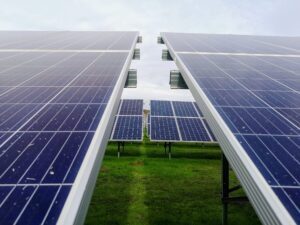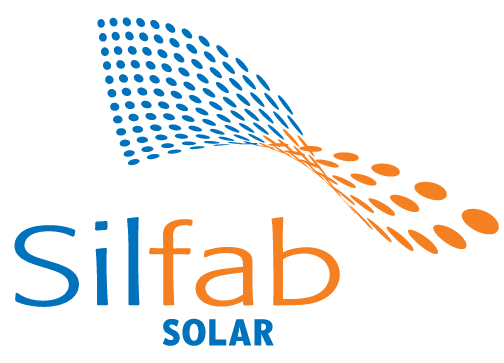- Home
- Residential
- Commercial
- Tesla
- Testimonials
- About Us
- Contact Us
Category: Solar Power
Invest In The Future Of Energy, Invest In Solar Panels
Written by goldensolar on . Posted in Solar Panels, Solar Power. Leave a Comment
What is solar energy?
Solar energy refers to the massive amounts of energy the sun has produced for billions of years. The sun is the most important source of energy for all life force and since the sun is always producing said energy it is the ultimate renewable source. Since the sun does not produce any pollutants it is one of the cleanest forms of energy. The potential of solar energy is quickly becoming a major talking point as many businesses and consumers begin to recognize the benefits of installing solar panels.Why solar panels?
Traditional methods of energy require consumers to be completely dependent on the grid. Which leaves them at the mercy of the energy companies, leaving consumers to suffer under rate hikes and inconsistent pricing structure the utility companies offer. Solar panels offer consumers a better, more affordable alternative to energy production. A well designed and expertly installed solar panel system can offer consumers solar incentive payments, and net big energy cost savings. As stated before solar energy is one of the cleanest forms of renewable energy available, solar panels do not produce any pollutants or waste when converting solar rays into energy. Because solar panels reduce consumers reliance on other energy sources, like fossil fuels, they have the ability to make an even larger impact on our efforts to reduce pollution and harmful CO2 emissions. Created from non-toxic materials, solar electric silicon panels are affordable, easy to install and require very little maintenance. Their only limitation is they cannot be used at night, and the amount of sunlight received varies based on location, time of day/year and the weather. In addition, consumers who invest in the installation of solar panels can take part in the various solar tax credits and utility incentives making it a much more affordable option. Some states even offer consumers net metering payments, allowing consumers to earn energy credits or even cash for any excess electricity produced. Solar panels offer consumers the opportunity to benefit from the most sustainable renewable energy source available, and increase their property value. For more information on how solar panels can help you release yourself from the dependency of the grid, visit goldensolar.net today.SOLAR INCENTIVES IN COLORADO
Written by goldensolar on . Posted in Solar Power. Leave a Comment
Solar incentives for photovoltaic systems in Colorado come from two sources: Federal government tax credits, and electric utilities. Some states have state income tax credits too but Colorado does not.
Federal Tax Credits for Solar
The most important benefit for people and businesses installing solar is a tax credit for 30% of the cost of the installation. Current Federal law allows the 30% credit for any system installed by the end of 2016. That is a dollar for dollar credit than can be used to cover income tax liabilities. Costs that can be used for the tax credit include electrical modifications needed to connect and structures for the solar panels. For example the cost of solar carport structures can generally be included in the calculation of the 30% tax credit. If a taxpayer cannot use all the credit it can be carried over to the next year.
Utility Incentives for Solar
The trend in utility incentives for solar installations is certainly down and looks as if they will drop further in the future. Just 3-4 years ago utility incentives used to cover more as much as half the cost of a solar. All utilities in Colorado at least offer net metering so that one kilowatt hour sent to the grid is worth one kilowatt hour pulled back from the grid. (Discussions are currently underway at the Colorado Public Utilities Commission regarding whether investor owned utilities will be required to continue to offer net metering for customer installed renewable energy systems.) Below are some Colorado utilities with whom we have experience and the solar incentives they offer for grid-tied solar systems to their customers:
Xcel Energy Solar Rewards Incentives
The largest electric utility on Colorado is investor owned Xcel Energy. Under the direction of the Public Utilities Commission Xcel currently offers what are called Production Based Incentives (PBI). Its 2014 incentives are running out in December 2014. But we expect them to offer a new round of incentives in about Feb 2015. Xcel plans to offer a PBI of 2 cents per kilowatt hour produced by newly installed systems for a period of ten years. This can amount to a few thousand dollars over ten years.
Xcel Energy incentives for commercial solar for systems of greater than 25 kilowatts (KW), which is about 100 solar panels, up to 500 KW are about to be restored at rather generous levels. Reports are that the new PBI will be at 5 cents per kilowatt hour produced for at least 10 years and perhaps 20 years. These payments significantly improve the rate of return for solar electric installations. This can also help compensate those Xcel commercial customers who might still have demand charges even after installing commercial solar electric systems.
United Power
The United Power Electrical Cooperative currently has an incentive of 40 cents per Kilowatt for photovoltaic installations up to a maximum of $1800. United Power also offers a wind generator incentive of up to $1050.
Ft Collins Utility
The Fort Collins Utility offers an incentive of $1.00 per watt for the first three kilowatts of DC solar power installed so this amounts to $3000 for three kilowatts or more on residential solar systems and up to $20,000 for commercial solar systems up to twenty kilowatts. The incentive is limited and not always available so it can be important to get applications in as soon as incentives are made available.
Colorado Springs Utility
The Colorado Springs utility offers some of the most generous incentives in Colorado. They offer up-front payments which are calculated using a formula that takes into account the efficiency of the system. Please check with us at Golden Solar for details and for how to calculate the expected incentive for your residence or commercial establishment.
Black Hills
Black Hills is the other investor owned utility in Colorado so it is also under the direction of the Public Utilities Commission. It has offered Performance Based Incentives (PBI) in the past and may again if ordered to do so by the PUC. It does still offer net metering.
Highline Electric Association
HEA has offered solar incentives. Check with them or with us for latest information on HEA solar incentives.
Morgan County Rural Electric Association
MCREA does not offer any financial incentives to its members for installing solar, other than allowing net metering.
Intermountain Rural Electric Association
IREA does not offer any financial incentives to its members for installing solar other than allowing net metering.
As always feel free to contact us at Golden Solar for the latest information on utility solar incentives and utility requirements for grid-tied solar electric systems.
5 indicators of a faulty solar installation
Written by goldensolar on . Posted in Solar Power. Leave a Comment
Home builders aim to incorporate energy-efficiency across the nation
Written by goldensolar on . Posted in Green Living, Solar Power. Leave a Comment
 All over the country, cities and towns are looking for ways to increase their overall energy efficiency. One major way that many municipalities have found is to update their building codes to increase the standards for new constructs and renovations.
In Vancouver, BC, some of these codes made it so difficult to renovate existing homes that some builders have been priced out of contracts. However, most American communities have been able to incorporate these updated mandates so that homes are remodeled with both historical accuracy and energy efficiency in mind.
In Wisconsin, both homeowners and builders have been working together to develop plans that would maintain the integrity of their property while also taking advantage of the innovations and technologies that would make their homes increasingly efficient. In Kiel, WI, one home has been remodeled to include geothermal technology, which utilizes temperatures from below the earth’s surface to generate heating and cooling. What is nice about the integration of this technology is that it can be used simultaneously without disrupting other structural and cosmetic improvements.
Additionally, in a number of major markets, including Chicago, Illinois, rehabilitated homes are now receiving solar energy to help new owners combat high electricity and utility costs. One of the leading developers in this area in Chicago is MarLar Properties, a husband and wife duo who buy, renovate and sell eco-friendly properties with the hope of building a better tomorrow. Larry Spatz, co-owner of the company, tells Proud Green Home, “I am a very small fish trying to make a ripple. It’s about preserving the planet for my grandchildren and their children.”
Isn’t that what any of us are trying to do? With the integration of energy-efficient technologies like solar electric panels, we hope that we can create a better environment for generations to come. If you want to become a part of the green revolution, contact Golden Solar today.
All over the country, cities and towns are looking for ways to increase their overall energy efficiency. One major way that many municipalities have found is to update their building codes to increase the standards for new constructs and renovations.
In Vancouver, BC, some of these codes made it so difficult to renovate existing homes that some builders have been priced out of contracts. However, most American communities have been able to incorporate these updated mandates so that homes are remodeled with both historical accuracy and energy efficiency in mind.
In Wisconsin, both homeowners and builders have been working together to develop plans that would maintain the integrity of their property while also taking advantage of the innovations and technologies that would make their homes increasingly efficient. In Kiel, WI, one home has been remodeled to include geothermal technology, which utilizes temperatures from below the earth’s surface to generate heating and cooling. What is nice about the integration of this technology is that it can be used simultaneously without disrupting other structural and cosmetic improvements.
Additionally, in a number of major markets, including Chicago, Illinois, rehabilitated homes are now receiving solar energy to help new owners combat high electricity and utility costs. One of the leading developers in this area in Chicago is MarLar Properties, a husband and wife duo who buy, renovate and sell eco-friendly properties with the hope of building a better tomorrow. Larry Spatz, co-owner of the company, tells Proud Green Home, “I am a very small fish trying to make a ripple. It’s about preserving the planet for my grandchildren and their children.”
Isn’t that what any of us are trying to do? With the integration of energy-efficient technologies like solar electric panels, we hope that we can create a better environment for generations to come. If you want to become a part of the green revolution, contact Golden Solar today.









